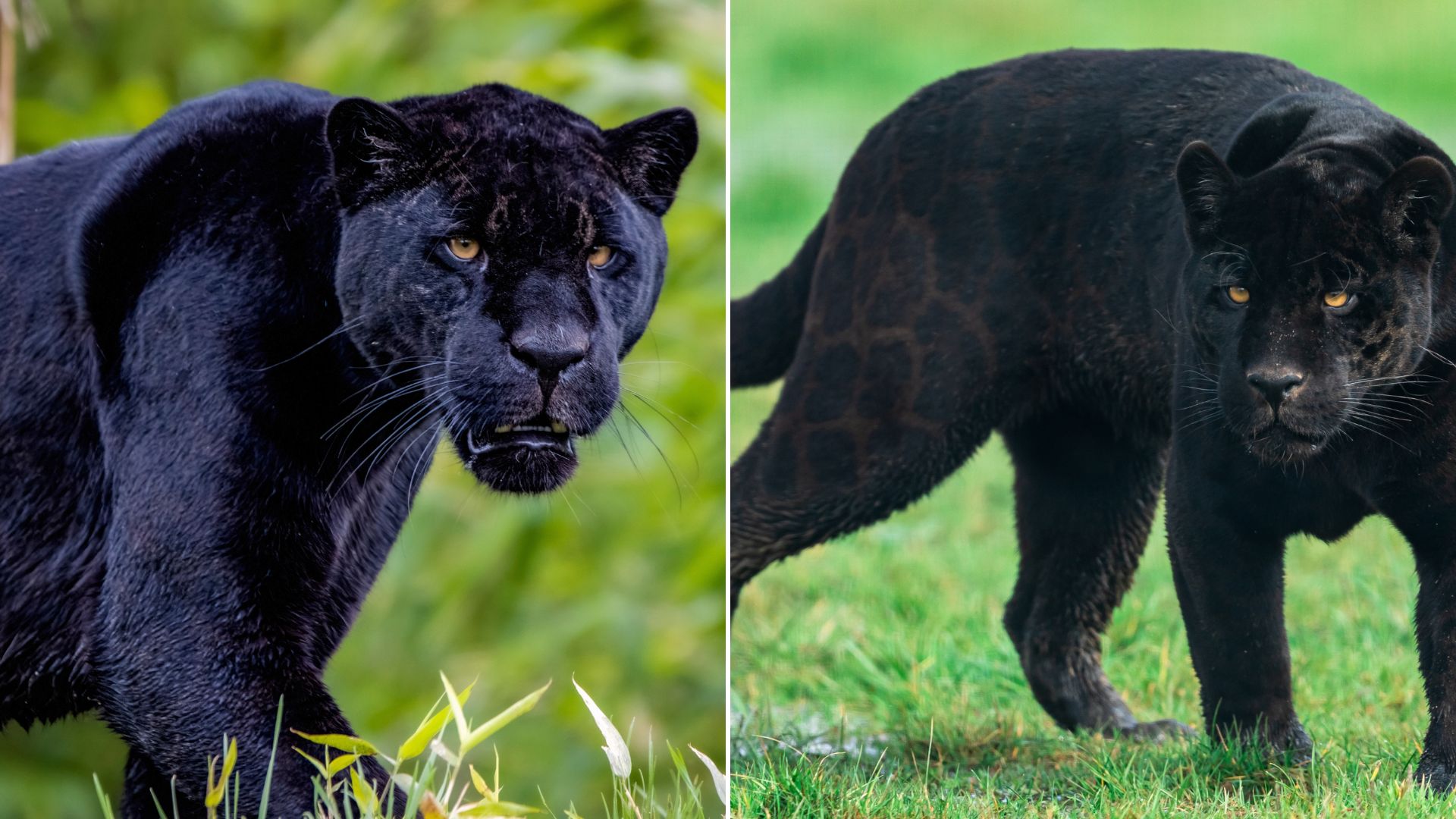The mysterious black panther has long captured imaginations, often portrayed as a fierce jungle predator in movies, mythology, and pop culture.
Its sleek, dark coat and stealthy presence give it an air of mystery and power, making it one of the most captivating big cats in the wild.
But did you know that the black panther isn’t a species on its own? It’s actually a term used for melanistic (dark-coated) variations of other big cats, most commonly the jaguar (Panthera onca) and the leopard (Panthera pardus).
Melanism, a genetic trait causing an excess of black pigmentation, gives these cats their shadowy appearance while their signature rosette patterns remain faintly visible beneath the dark fur.
Though they may look nearly identical at first glance, black jaguars and black leopards belong to different species with distinct behaviors, habitats, and physical traits.
From where they live to how they hunt, these two predators have evolved unique adaptations that set them apart.
Learning to identify the differences between these magnificent felines not only makes them more fascinating but also plays a key role in their conservation.
Let’s break down key ways to tell a black jaguar from a black leopard and explore the captivating world of these legendary big cats.
1. Species – Same Look, Different Big Cats
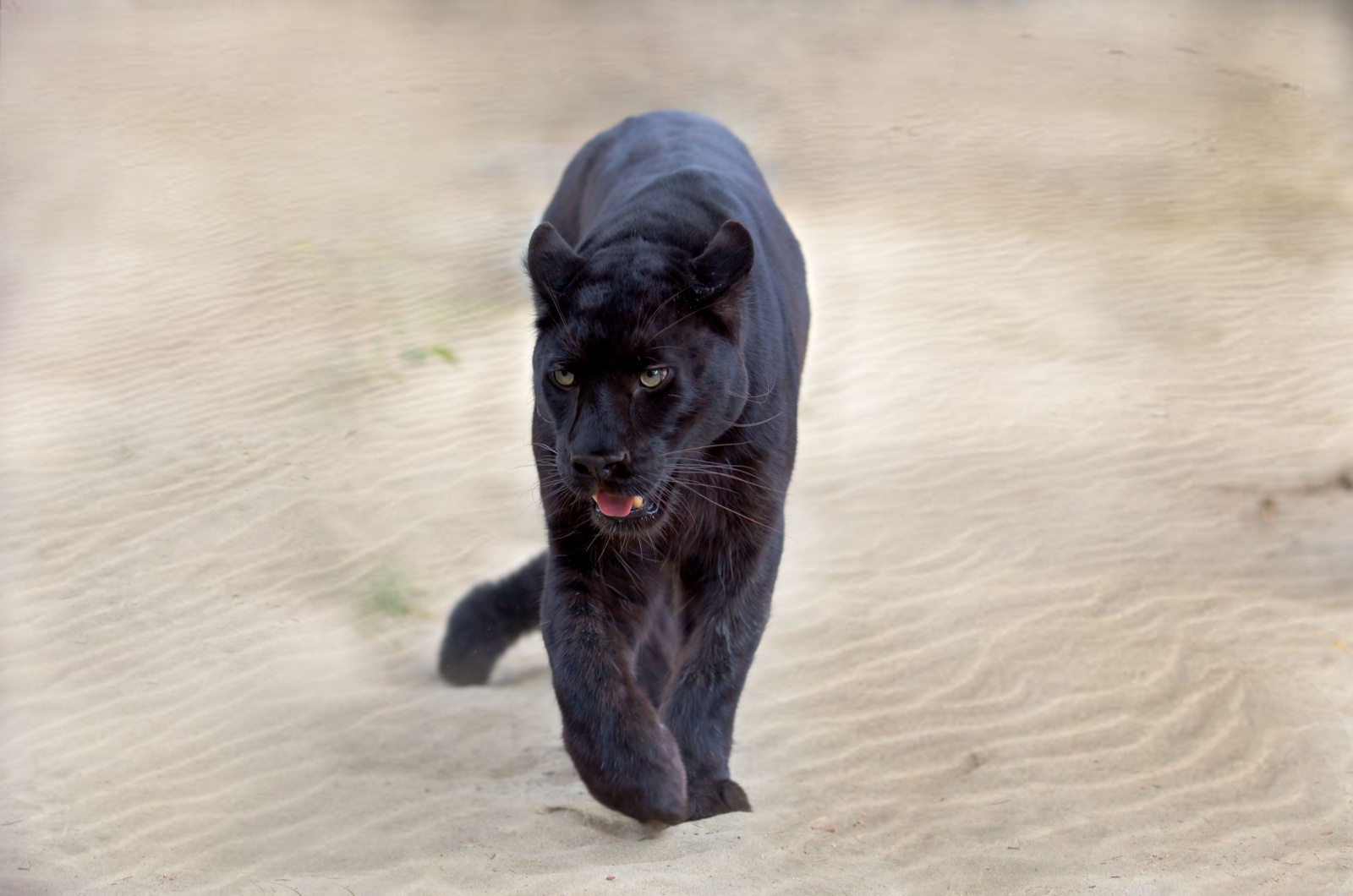
While they look similar, black panthers and black jaguars are not the same species. A black jaguar (Panthera onca) is a melanistic variation of the jaguar, native to the Americas.
On the other hand, a black leopard (Panthera pardus) comes from Africa and parts of Asia.
The term “black panther” can refer to both, but they are genetically distinct. Melanism is a rare genetic condition that results in excessive black pigmentation, giving both cats their dark, sleek coats.
Despite the melanism, their rosette patterns are still faintly visible if you look closely. Knowing the species matters, especially in conservation efforts, since jaguars and leopards face different environmental challenges depending on their regions.
2. Geographic Range – Worlds Apart
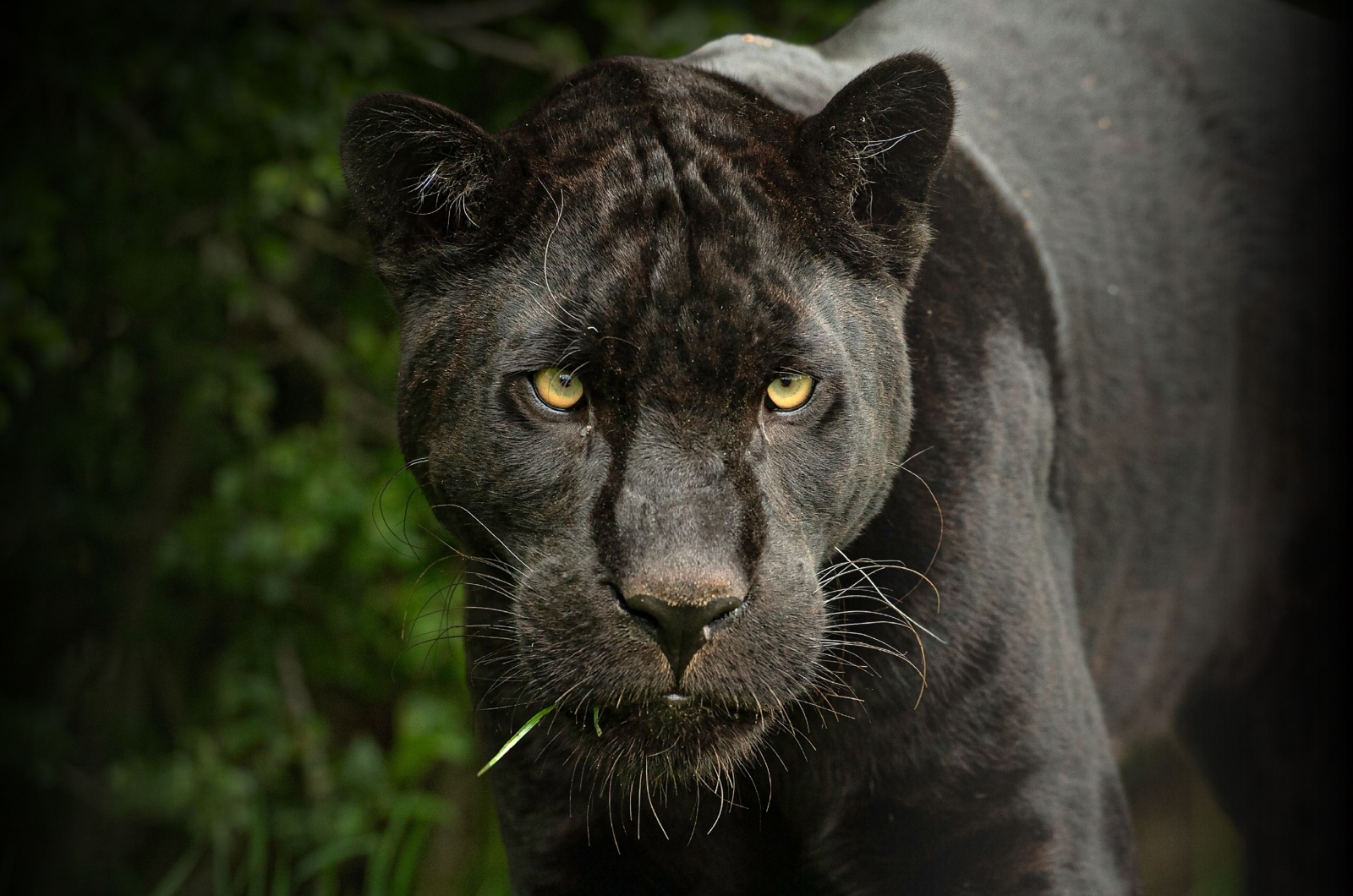
The habitats of black jaguars and black leopards are separated by continents. Black jaguars are native to Central and South America, particularly the Amazon rainforest, where they thrive in dense, humid jungles.
Meanwhile, black leopards roam the forests of Africa and Asia, with strong populations in India, Malaysia, and parts of sub-Saharan Africa.
Their choice of habitat plays a huge role in their behavior and hunting strategies. Jaguars favor the water-rich rainforests where they can hunt aquatic prey, while leopards prefer dry grasslands and forests where they excel at stealth.
If you spot a black panther in the wild, its location might be your first clue to whether you’re looking at a jaguar or a leopard.
3. Physical Build – Stocky vs. Sleek
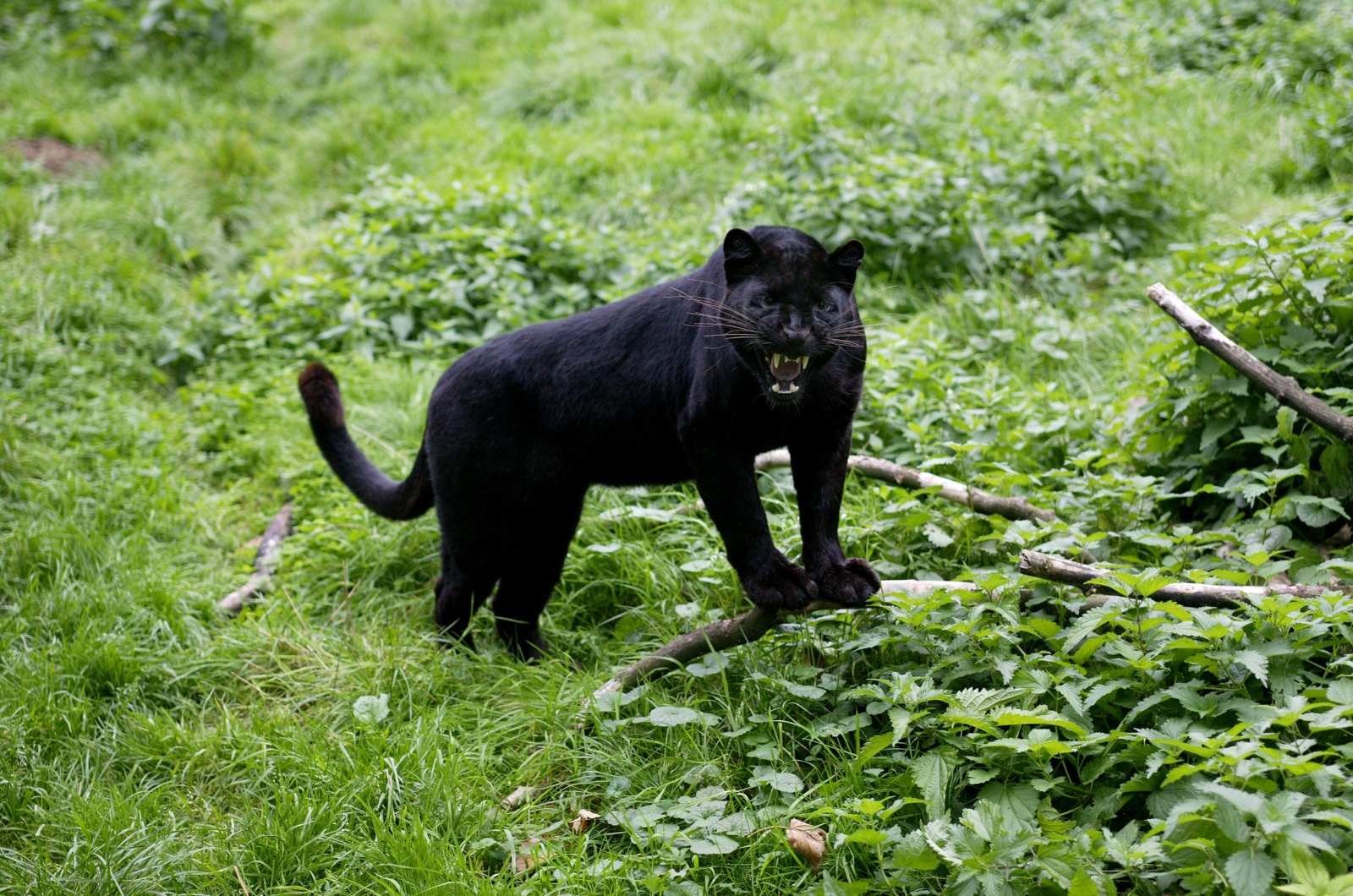
Though both cats share a muscular build, jaguars are noticeably stockier and more powerful compared to the more slender leopards.
Jaguars have a broader head, massive jaws, and a heavily built body designed for sheer strength, making them the true powerhouses of the wild cat family.
Their compact, muscular build allows them to deliver a bone-crushing bite, powerful enough to pierce through skulls and crack the shells of armored prey like turtles.
This sheer strength enables them to take down much larger animals, including caimans and tapirs, with a single lethal bite.
Leopards, on the other hand, are lighter and more agile, with longer legs and a leaner frame built for climbing and stealth-based hunting. Their athletic physique allows them to leap great distances and drag prey several times their weight up into trees to avoid scavengers.
While jaguars overpower prey with brute force, leopards rely more on speed, precision, and the element of surprise.
So, if you see a black panther with a broad head, massive shoulders, and a stocky body, it’s likely a jaguar. A more slender, graceful cat with longer legs and a streamlined build? That’s probably a leopard.
4. Coat Patterns – Hidden Rosettes
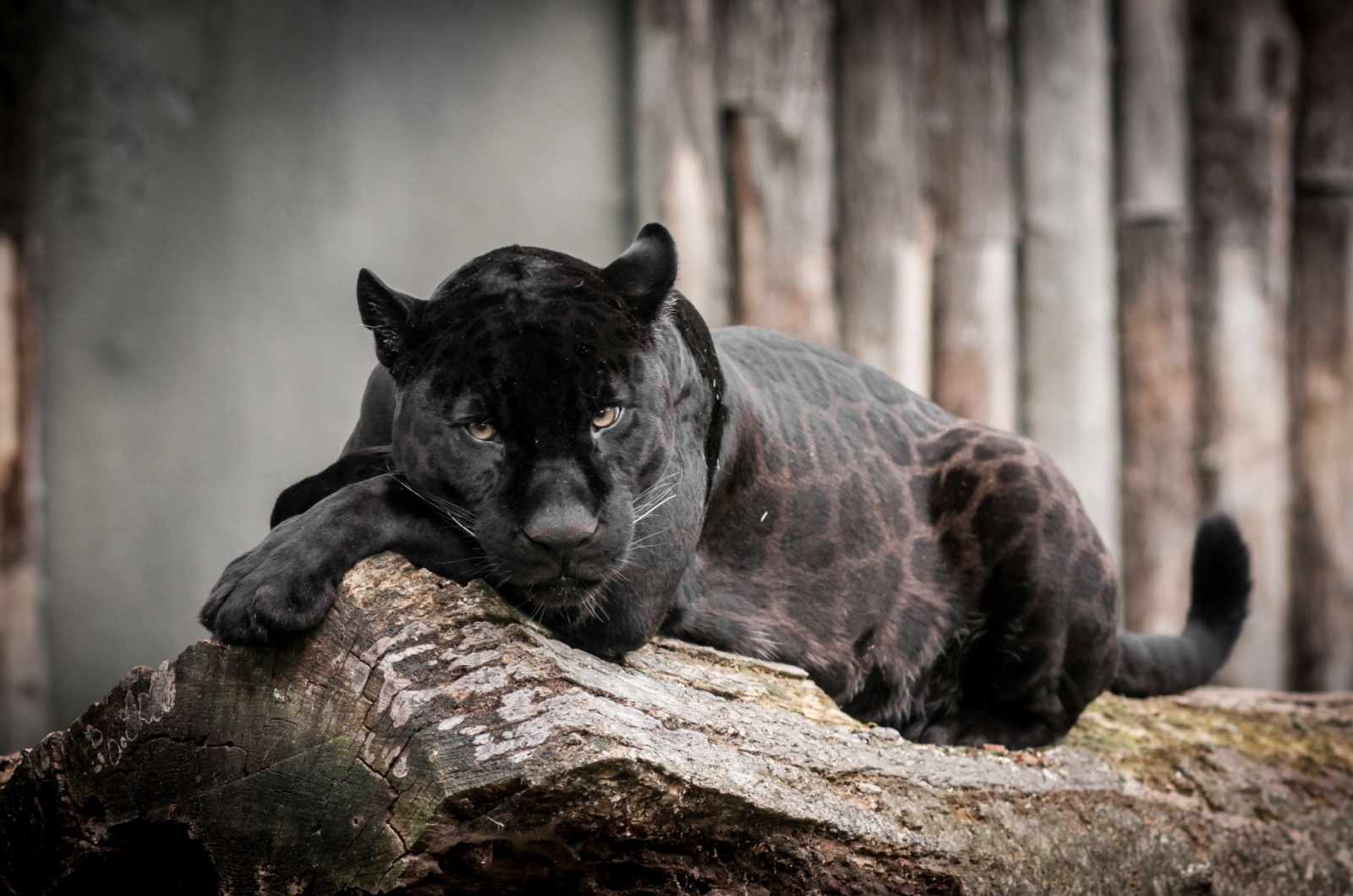
At first glance, both black jaguars and black leopards appear to have sleek, pitch-black coats, often giving the illusion of being completely void of markings.
However, their signature rosette patterns, which are standard for both species, remain present beneath the melanistic fur and can be revealed under the right lighting.
This fascinating phenomenon, often called “ghost rosettes,” is a subtle clue to their true identity. The difference between the two lies in the structure of these patterns.
Jaguars have larger, more spaced-out rosettes with a distinct central black spot inside each one, while leopards have smaller, more densely packed rosettes without a central spot, giving their fur a more uniform appearance.
This pattern variation reflects their evolutionary adaptations to different environments.
Jaguars, with their broader rosettes, blend more effectively into the dappled light of dense South American rainforests, while the finer rosettes of leopards provide better camouflage in the grassy plains and forests of Africa and Asia.
If you ever spot a picture of a black panther or are lucky enough to see one in the wild, take a closer look.
The faint, hidden markings can reveal whether you’re admiring the power of a jaguar or the elegance of a leopard.
5. Hunting And Behavior – Water Lovers vs. Tree Climbers
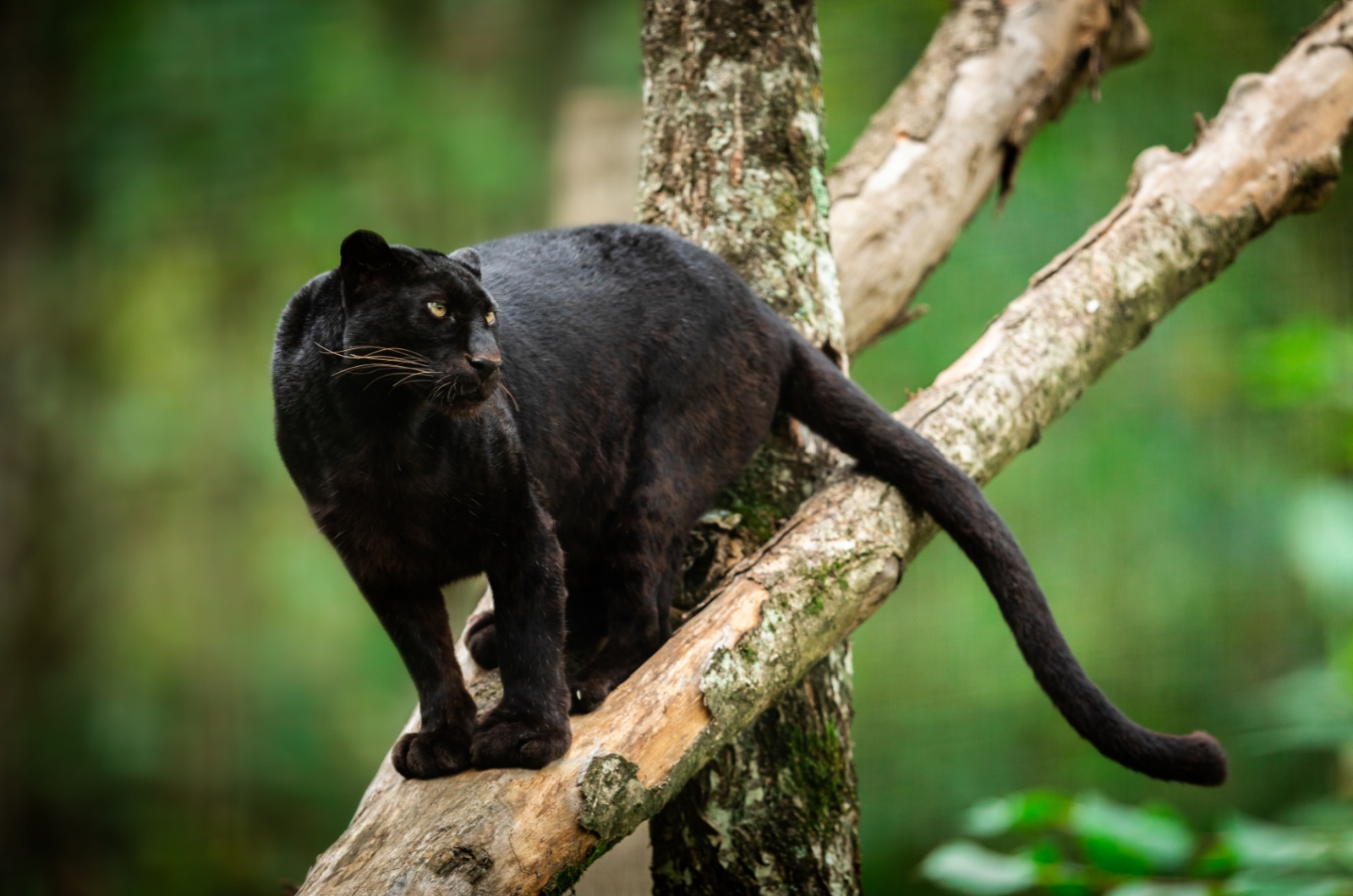
The hunting habits and behavior of black jaguars and black leopards differ significantly, shaped by their unique habitats and evolutionary adaptations.
Jaguars, native to the dense rainforests of Central and South America, are often associated with water, a rare trait among big cats.
They are exceptional swimmers and frequently hunt aquatic prey such as caimans, turtles, and large fish.
Their hunting technique relies on brute strength, with a bite so powerful it can pierce through the skull or spine of their prey, making them one of the most efficient predators in the animal kingdom.
This technique allows them to take down larger, armored prey that other big cats might avoid. Leopards, in contrast, are more solitary, stealth-driven hunters found in Africa and Asia.
They are expert climbers and are known for their unique ability to drag prey several times their body weight up into trees, protecting their catch from scavengers like hyenas and lions.
Leopards rely on patience, ambushing prey with quiet, calculated movements before delivering a precise throat bite to suffocate their victim.
Their slender build and lighter frame make them incredibly agile, allowing them to hunt both on the ground and in the trees.
So, if you spot a black panther prowling through water, it’s likely a jaguar. A black cat perched high in the treetops with a fresh kill? That’s probably a leopard!
6. Vocalizations – Who Roars Louder?
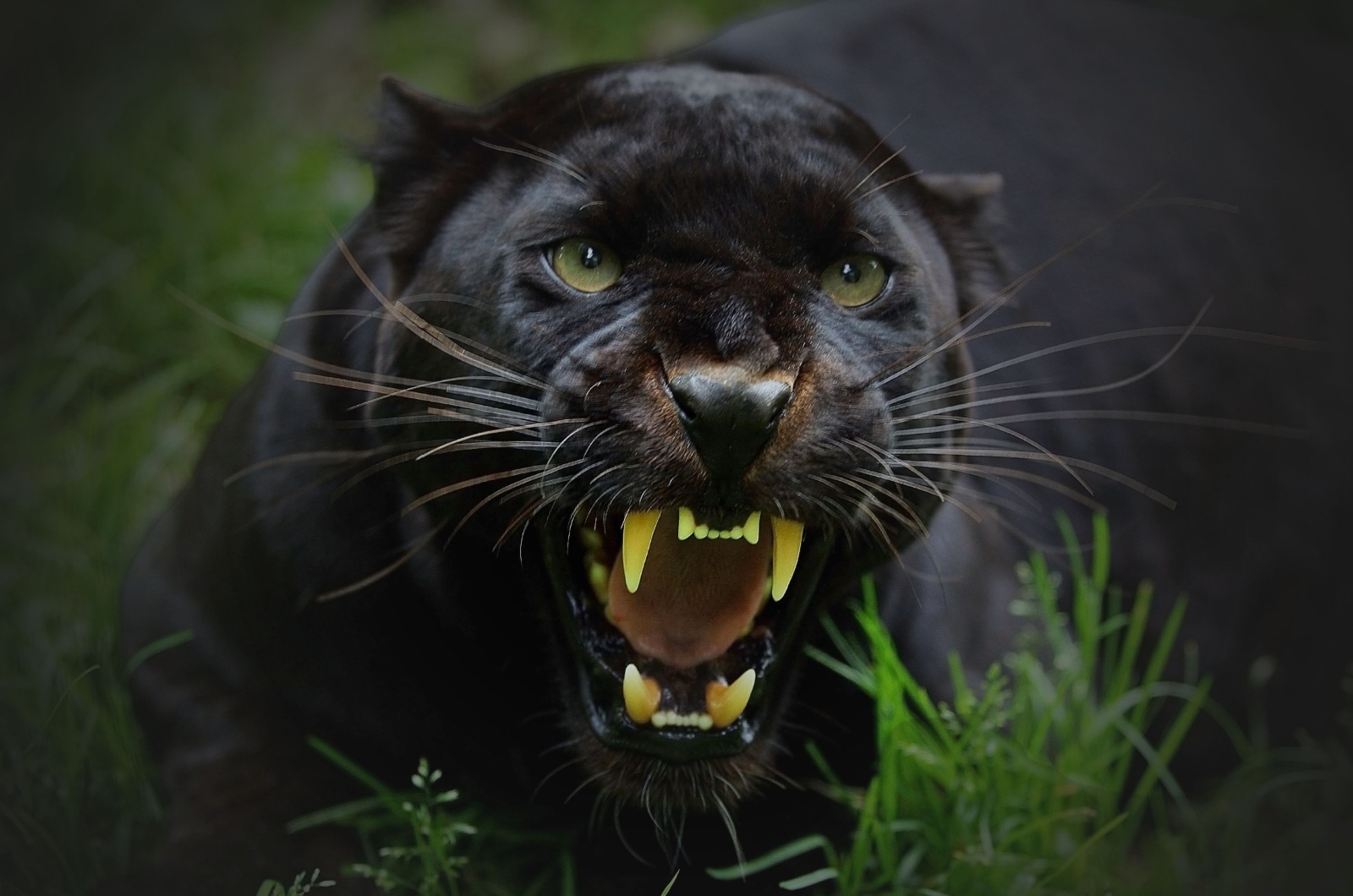
Though both big cats are part of the Panthera genus and can roar, they sound quite different.
Jaguars produce deep, guttural roars that are often described as a “sawing” sound, resembling wood being cut with a saw. It’s a lower, more forceful sound meant to intimidate rivals or communicate over long distances.
Leopards also produce a sawing-like roar but with a higher pitch and a more repetitive pattern.
These vocal differences can help wildlife experts identify the species, especially in regions where both cats might exist.
7. Conservation Status – Both Need Protection
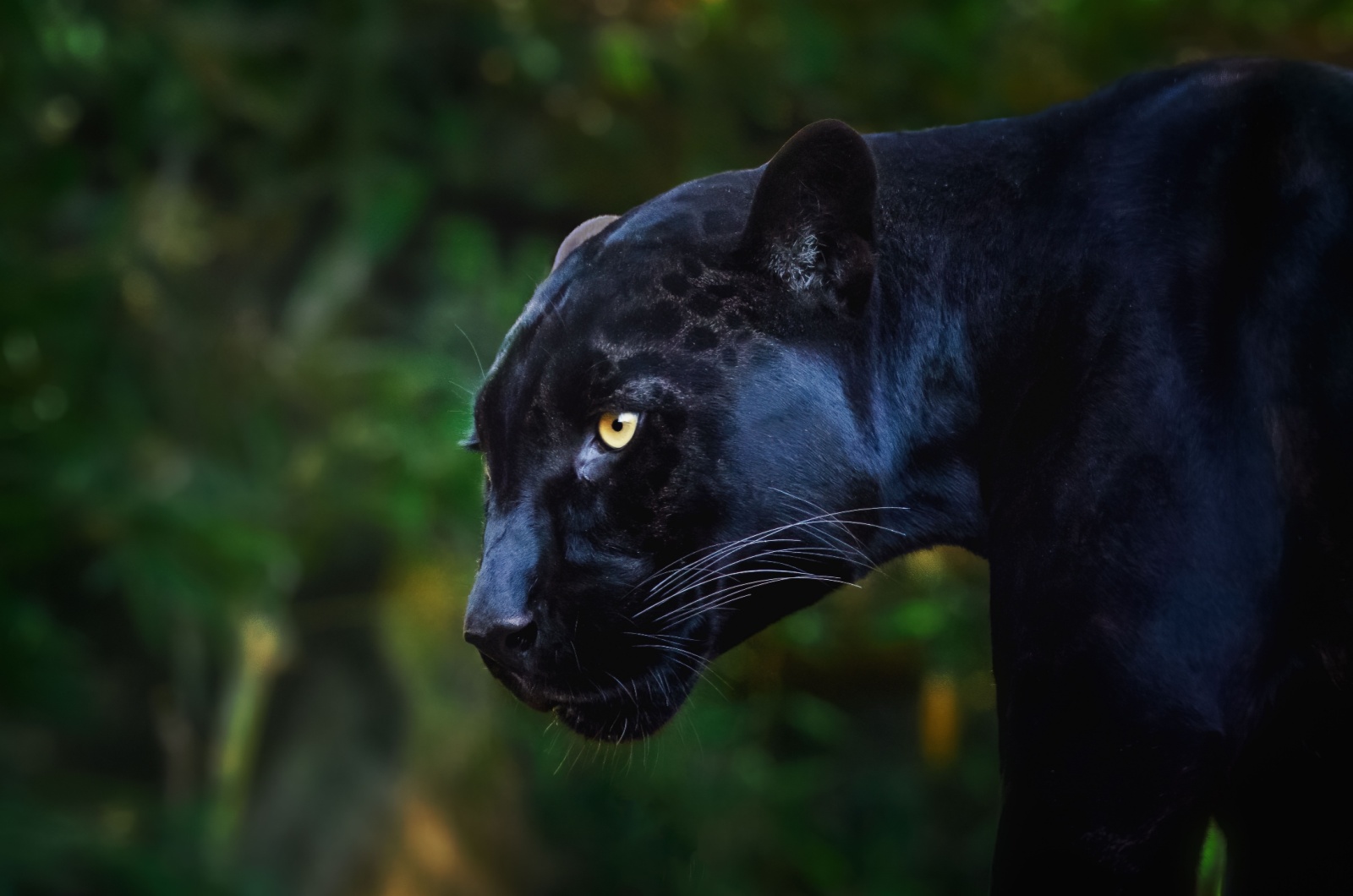
Both black jaguars and black leopards face significant conservation challenges, yet the threats they encounter and their conservation statuses differ slightly due to their distinct habitats and geographic ranges.
Jaguars, primarily found in the dense rainforests of Central and South America, are classified as Near Threatened on the IUCN Red List.
Their primary threat is widespread deforestation, especially in the Amazon rainforest, where agriculture, cattle ranching, and infrastructure expansion continue to shrink their natural habitat.
Jaguars also face poaching, both for their stunning coats and as a retaliatory measure by farmers seeking to protect livestock.
Leopards, on the other hand, are listed as Vulnerable on the IUCN Red List, though certain subspecies face even greater risks.
The Amur leopard, for example, is critically endangered, with fewer than 100 individuals remaining in the wild due to poaching and habitat fragmentation.
Leopards are highly adaptable and can survive in diverse environments, from African savannas to Asian forests, but human-wildlife conflict and illegal wildlife trade continue to threaten their populations.
Conservation efforts for both species must be tailored to their unique needs. Protecting jaguars requires preserving large, connected tracts of rainforest, while leopard conservation involves protecting fragmented habitats and preventing poaching.
Educating local communities about the ecological importance of these apex predators can help reduce conflict and promote coexistence.
By understanding their differences and shared challenges, conservationists can work towards ensuring a future where both majestic cats can thrive.

